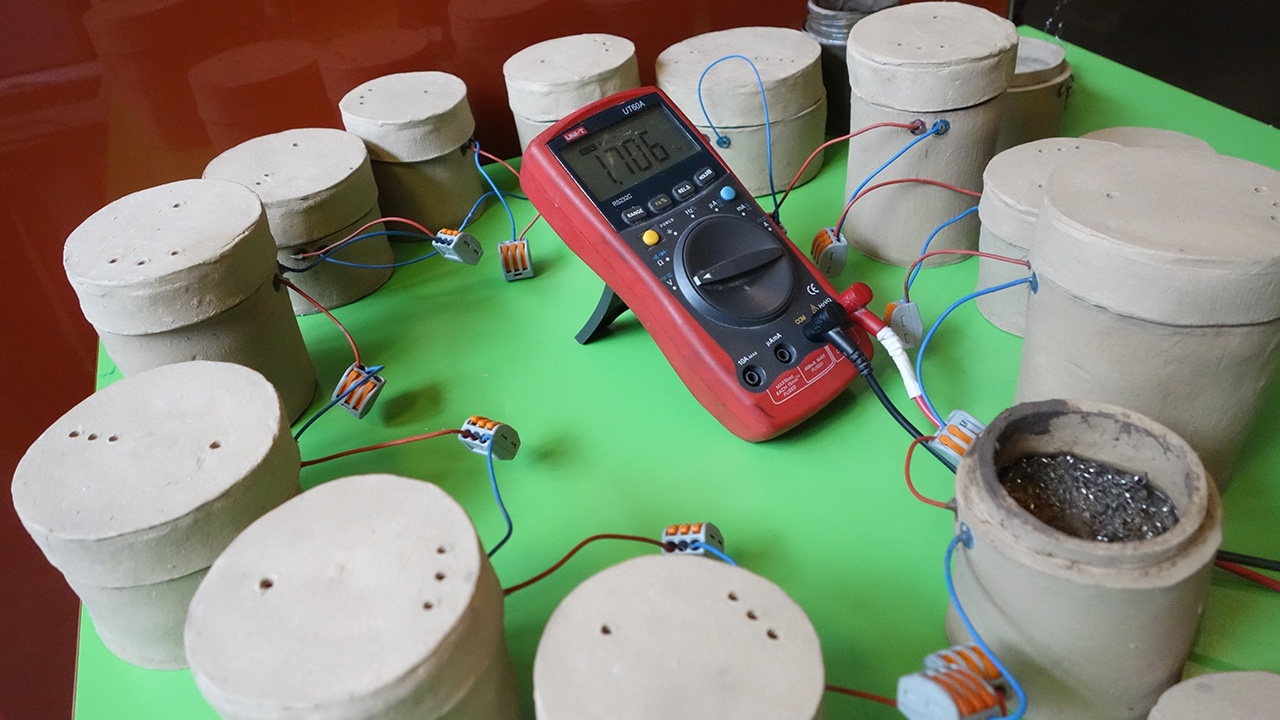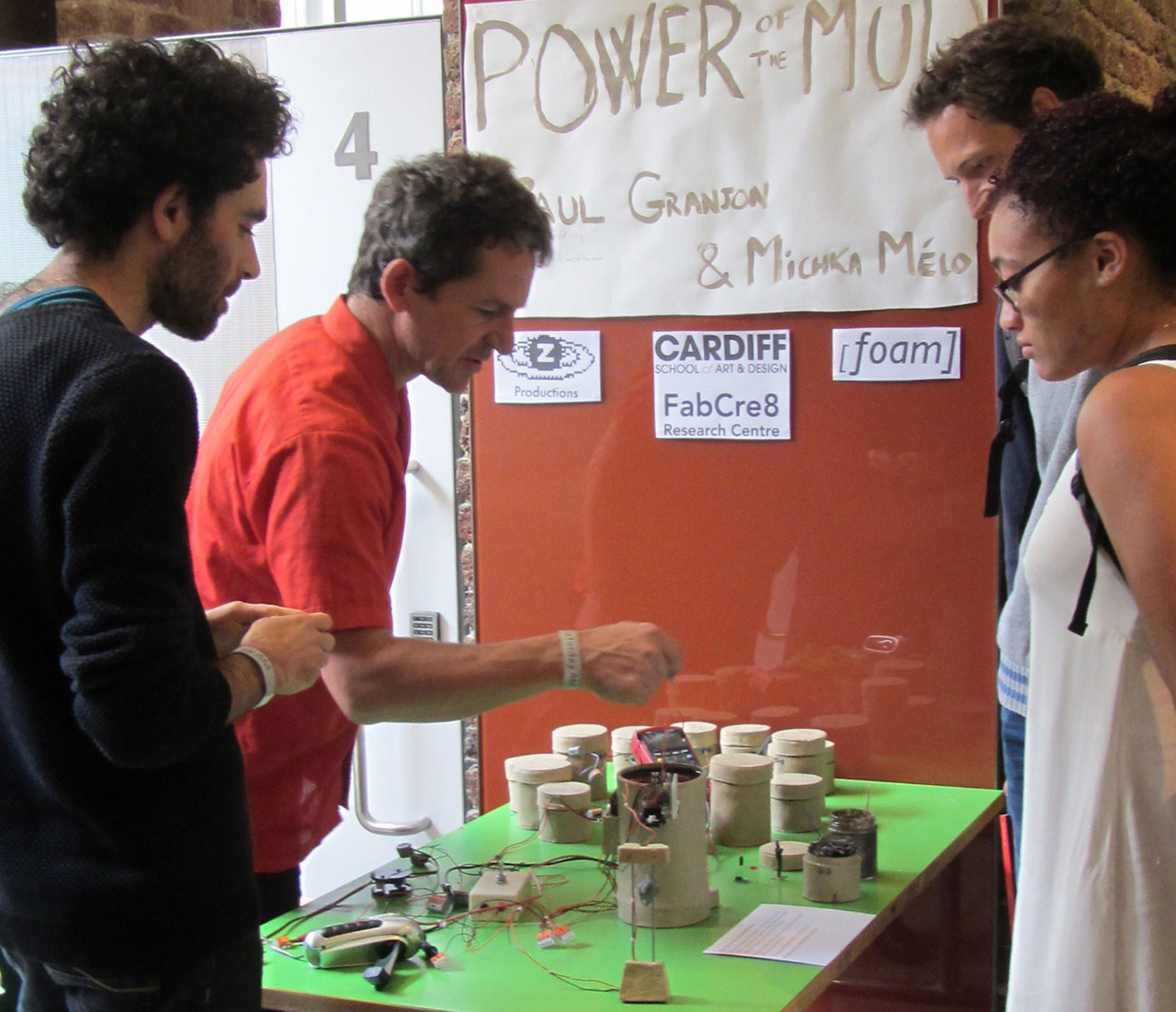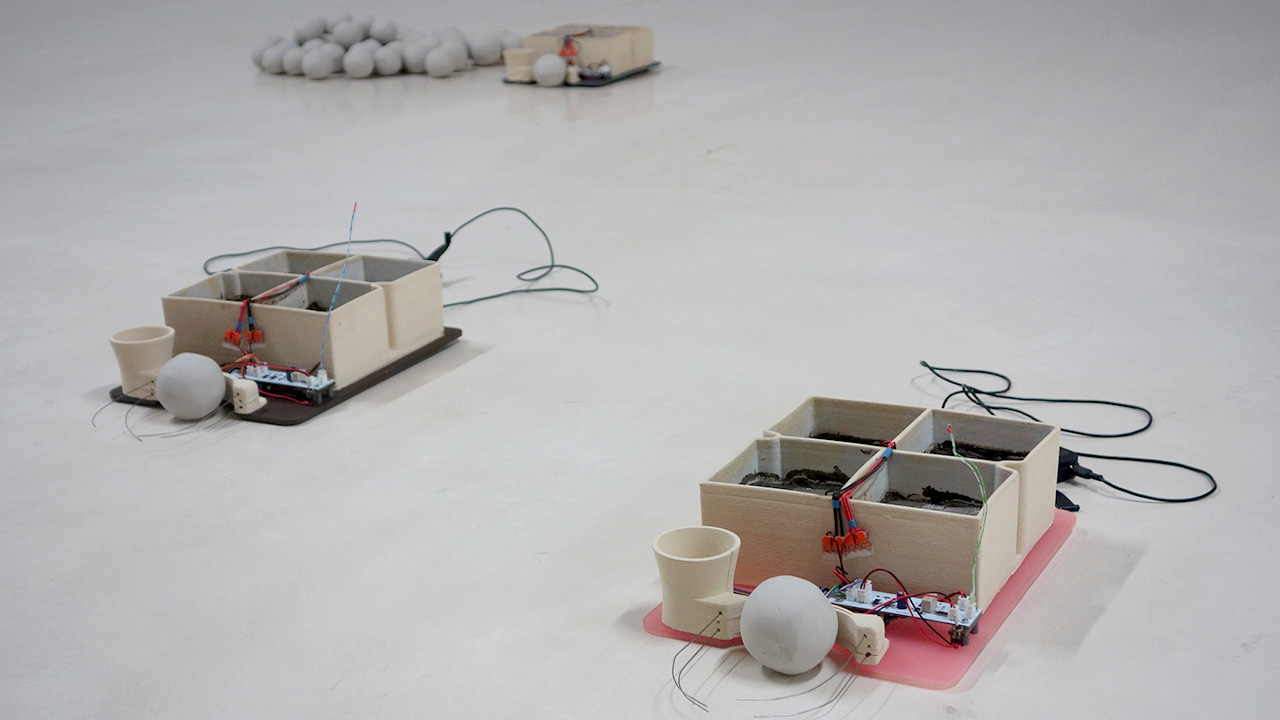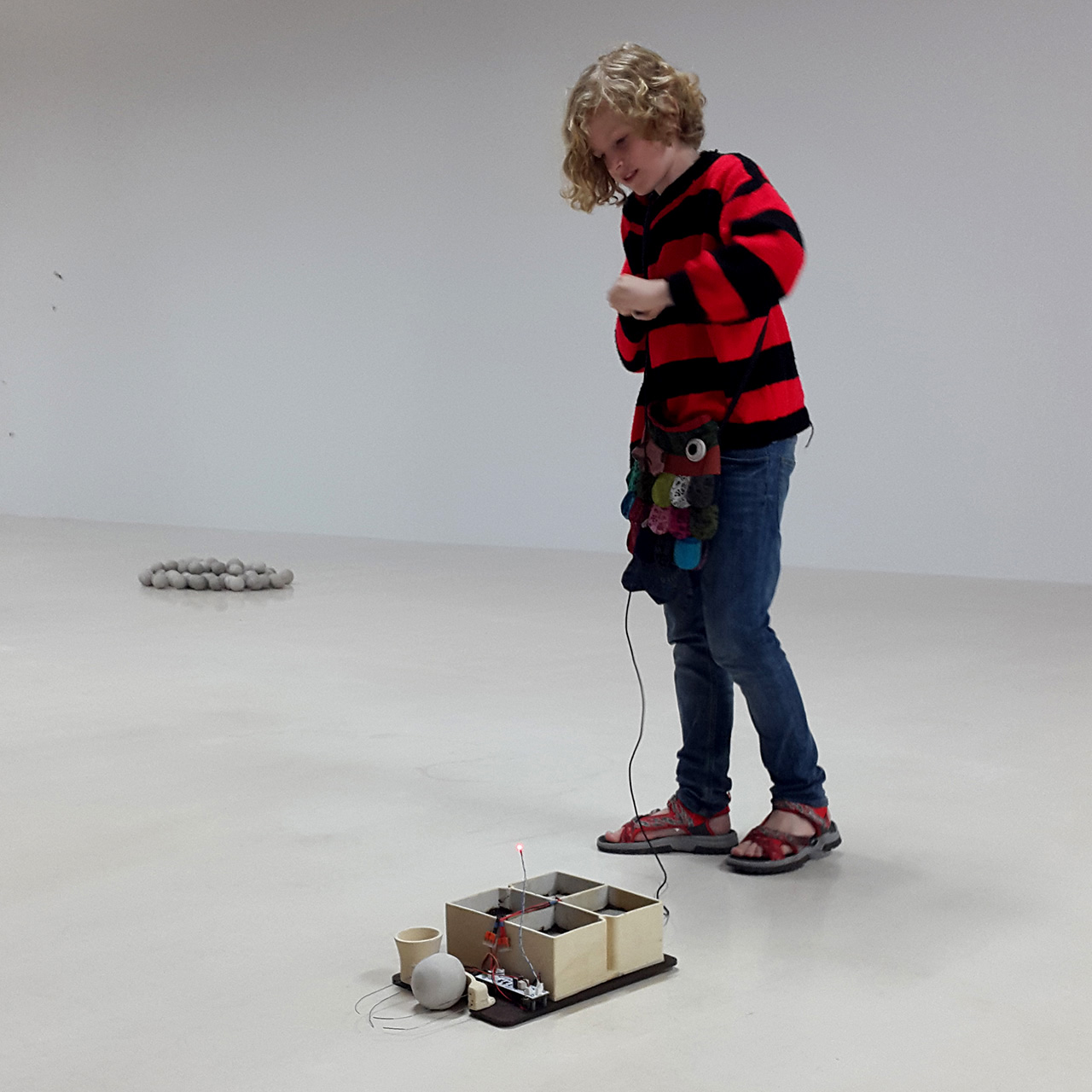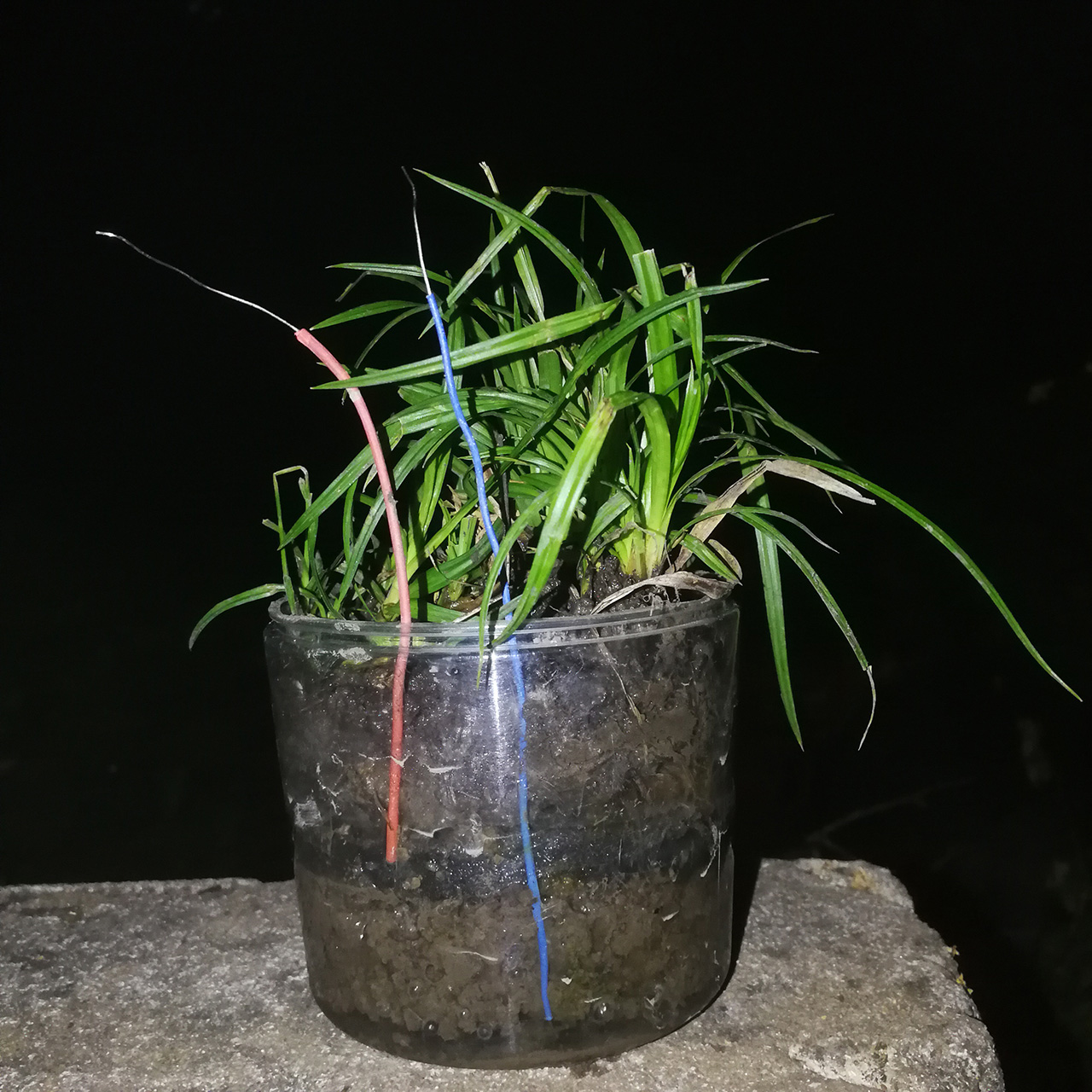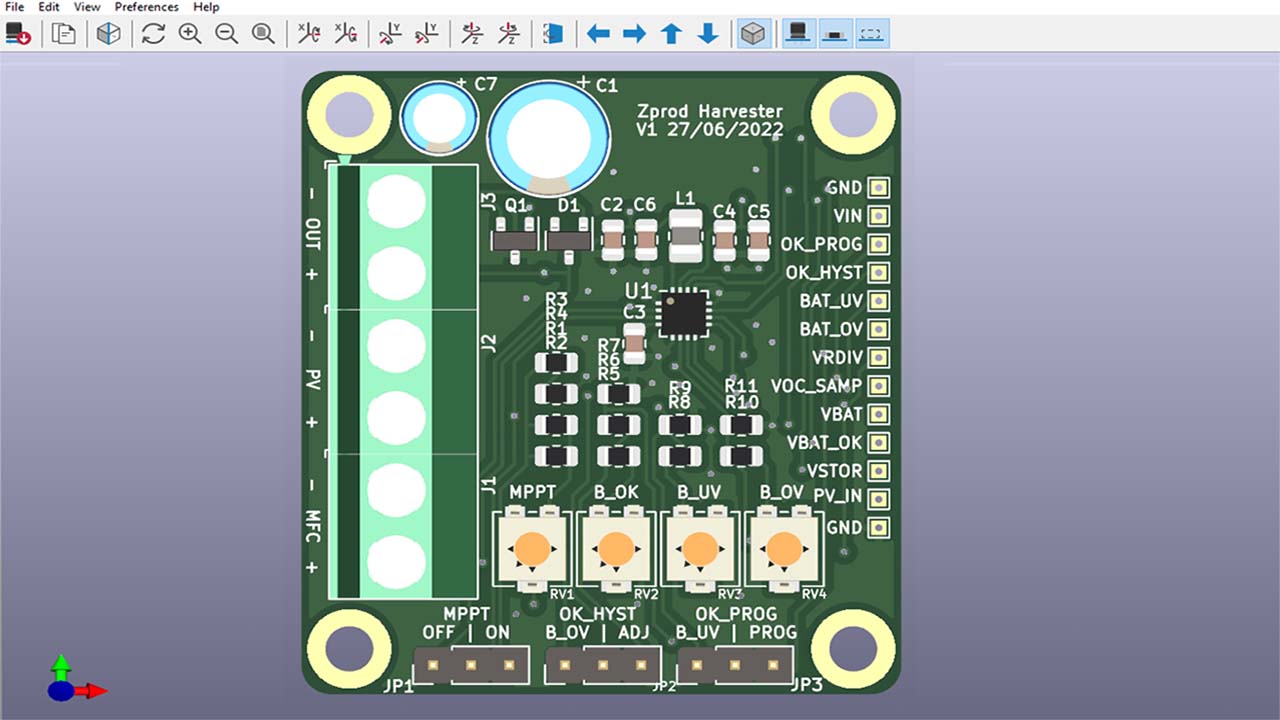Poster
Poster
Power of the Mud – Designing an Open Source Microbial Fuel Cell for Art and Design
Power of the Mud
The author is a robotic art practitioner with a keen environmental agenda. In 2016 he started a collaboration with bio-engineer Michka Melo, exploring the potential of microbial fuel cells (MFCs) as a sustainable power source for robotic artworks. The research aims at disseminating a simple open-source design for MFCs and related harvesting circuitry to be used by artists, educators and other creative audiences.
Sometimes described as “mud batteries”, MFCs generate power by harvesting the small electric current generated by the bacteria present in most soils. MFCs are mostly used in wastewater treatment or remote sensing applications such as environmental monitoring. Beside their potential for green power generation, MFCs can be the basis for narratives focused on sustainability. The wow factor involved in seeing an electro-mechanical device powered solely by a pot of mud leads to reflections on the invisible life of soils and the interdependency of humans, technological systems and microorganisms. This evocative dimension was used by artists Smits and Smite in a series of installations that demonstrate microbial fuel cells functionality with microscopic imagery and data readings inspired from scientific displays, aiming to “inspire our senses and emotions to connect us to the invisible living environment around us” (Smite and Smits 188).
The collaboration with Melo (Melo and Granjon web) resulted in the fabrication of prototype batteries (fig. 1). These were demonstrated as a possible source of power when combined with an electronic circuit that harvests the microbes’ output and stores it until the current is sufficient for a short burst of robot activity (fig.2). The experiments led to the MFC-powered Mudbots, an installation commissioned for a robotic art exhibition in Spain (Granjon web). The piece consists of 11 small robots – loosely inspired from dung beetles – that push a ball of clay in front of them (fig 3 and 4). The robots’ bodies are mostly made of 3D printed clay, a material akin to the mud used in the batteries. The visitors also can provide energy to the robots with hand-cranked dynamos (fig. 5). The installation makes visible the activity of microorganisms carried through a playful set-up, illustrating a gentle and collaborative mode of operation where electronics, microbial and human sustainably collaborate.
Unfortunately the Mudbots’ batteries stopped working after a few days of exhibition, leaving the robots to depend solely on visitors. The author is currently researching methods for making durable and stable MFCs with everyday materials, to be used in robotic artworks and other frugal applications. The new design is based on a bryophyte microbial fuel cell system as developed by Paolo Bombelli. The design uses live plants or moss as a regenerative agent that extends the lifespan of the bacteria present in the battery (Bombelli et al.). Such a system was successfully implemented to power a small radio. In addition to the extended longevity, the plants on the MFC add a visually striking living aspect apt at stimulating imaginations (figs. 6 and 7). The author’s current research includes the creation of a low-cost open-source harvesting circuit for MFCs making use of cutting edge ultra-low power electronics (Yamashita et al.) (fig. 8).
References
Bombelli et al.: ‘Electrical Output of Bryophyte Microbial Fuel Cell Systems is Sufficient to Power a Radio or an Environmental Sensor’, Royal Society Open Science Volume 3 Issue 10, 2016
Granjon P.: Mudbots, https://www.zprod.org/zwp/mudbots, 2018
Melo, M. and Granjon, P.: Power of the Mud, https://libarynth.org/powerofthemud, 2016-17
Smite R. and Smits R.: ‘Biotricity. Fluctuations of Micro-Worlds’ in Oslofjord Ecologies. Artistic Research on Environmental and Social Sustainability, edited by Kristin Bergaust, Rasa Smite and Daina Silina. Riga: RIXC, 2020
Yamashita T. et al: ‘Ultra-Low Power Energy Harvester for Microbial Fuel Cells and its Application to Environmental Sensing and Long-Range wireless data Transmission’, Journal of Power Sources 430, Elsevier 2019
All photos credit by the author

Paul Granjon
Cardiff Metropolitan University
Biography−
Paul Granjon is an artist interested in the co-evolution of humans and machines, imagining solutions for alternative, sustainable futures and sharing his experience of creative technologies. He has been making robots and other machines for exhibitions and performances since 1996. Granjon’s work became known for a trademark combination of humour and serious questions, delivered with absurd machines that made use of recycled components. His Sexed Robots were exhibited in the Welsh Pavilion at the Venice Biennale in 2005. He performs and exhibits internationally, most recent commissions in Garage Museum Moscow, Azkuna Zentroa Bilbao, Arcade Campfa Cardiff. He regularly delivers Wrekshops, public events where participants take apart electronic waste and build temporary new machines from the bits they find. Granjon’s current work is driven by an ecologist and participatory agenda. He teaches Fine-Art in Cardiff School of Art and Design, where he is currently completing a practice-based PhD.
Power of the Mud – Designing an Open Source Microbial Fuel Cell for Art and Design
Gallery
